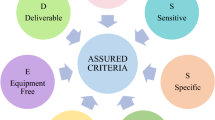Abstract
This work presents a microfluidic device to capture physically single cells within microstructures inside a channel and to measure the impedance of a single HeLa cell (human cervical epithelioid carcinoma) using impedance spectroscopy. The device includes a glass substrate with electrodes and a PDMS channel with micro pillars. The commercial software CFD–ACE+ is used to study the flow of the microstructures in the channel. According to simulation results, the probability of cell capture by three micro pillars is about 10%. An equivalent circuit model of the device is established and fits closely to the experimental results. The circuit can be modeled electrically as cell impedance in parallel with dielectric capacitance and in series with a pair of electrode resistors. The system is operated at low frequency between 1 and 100 kHz. In this study, experiments show that the HeLa cell is successfully captured by the micro pillars and its impedance is measured by impedance spectroscopy. The magnitude of the HeLa cell impedance declines at all operation voltages with frequency because the HeLa cell is capacitive. Additionally, increasing the operation voltage reduces the magnitude of the HeLa cell because a strong electric field may promote the exchange of ions between the cytoplasm and the isotonic solution. Below an operating voltage of 0.9 V, the system impedance response is characteristic of a parallel circuit at under 30 kHz and of a series circuit at between 30 and 100 kHz. The phase of the HeLa cell impedance is characteristic of a series circuit when the operation voltage exceeds 0.8 V because the cell impedance becomes significant.








Similar content being viewed by others
References
H. Andersson, W. van der Wijngaart, P. Enoksson, G. Stemme, Sens. Actuators 67, 203–208 (2000)
H.E. Ayliffe, A.B. Frazier, R.D. Rabbitt, IEEE J. Microelectromech. Syst. 8, 50–57 (1999)
O. Bakajin, R. Carlons, C. Chou, S. Chan, C. Gabel, J. Knight, T. Cox, R. Austin, in MicroTAS, 1998, pp. 193–198
J.Z. Bao, C.C. David, R.E. Schmukler, IEEE Trans. Biomed. Eng. 40(4), 364–378 (1993)
R. Carlson, C. Gabel, S. Chan, R. Austin, Phys. Rev. Lett. 79, 2149–2152 (1997)
I.H.G.S. Consortium, Nature 409, 860–921 (2001)
S. Fiedler, S. Shirley, T. Schnelle, G. Fuhr, Anal. Chem. 70, 1909–1915 (1998)
J.-J. Gau, E.H. Lan, B. Dunn, C.-M. Ho, J.C.S. Woo, Biosens. Bioelectron. 16, 745–755 (2001)
S. Gawad, K. Cheung, U. Seger, A. Bertsch, P. Renaud, Lab Chip 4, 241–251 (2004)
I. Giaever, C.R. Keese, Chemtech 22, 116–125 (1992)
K.H. Gilchrist, L. Giovangrandi, G.T.A. Kovacs, in The 11th International Conference on Solid-State Sensors and Actuators, Munich, Germany, June 2001, pp. 10–14
K.H. Gilchrist, L. Giovangrandi, R.H. Whittington, G.T.A. Kovacs, Biosens. Bioelectron. 20, 1397–1406 (2005)
R. Gomez, R. Bashir, A. Sarikaya, M.R. Ladisch, J. Sturgis, J.P. Robinson, T. Geng, A.K. Bhunia, H.L. Apple, S. Wereley, Biomed. Microdev. 3, 201–209 (2001)
Y. Huang, K. Ewalt, M. Tirado, R. Haigis, A. Forster, D. Ackley, M. Heller, J. O’Connell, M. Krihak, Anal. Chem. 73, 1549–1559 (2001)
L.-S. Jang, Y.-J. Li, S.-J. Lin, Y.-C. Hsu, W.-S. Yao, M.-C. Tsai, C.-C. Hou, Biomed. Microdev. 9(2), 185–194 (2007)
H. Liang, W.H. Wright, C.L. Rieder, E.D. Salmon, G. Profeta, J. Andrews, Y. Liu, G.J. Sonek, M.W. Berns, Exp. Cell Res. 213, 308–312 (1994)
C.-S. Liao, G.-B. Lee, H.-S. Liu, T.-M. Hsieh, C.-H. Luo, Nucleic Acids Res. 33(18), e156–e162 (2005)
M. Niikura, A. Maeda, T. Ikegami, M. Saijo, I. Kurane, S. Morikawa, Arch. Virol. 149, 1279–1292 (2004)
C. Rusu, R. van’t Oever, M. de Boer, H. Jansen, J. Berenschot, J. Bennink, J. Kanger, B. de Grooth, M. Elwenspoek, J. Grever, J. Brugger, A. van den Berg, J. Microelectromech. Syst. 10, 238–247 (2001)
R. Schmukler, G. Johnson, J.Z. Bao, C.C. Davis, in IEEE Engineering in Medicine & Biology Society 10 th Annual Conference, vol. 10, no. 2, 1988, pp. 899–901
J.C.e.a. Venter, Science 291, 1304–1351 (2001)
N. Verma, M. Singh, Biosens. Bioelectron. 18, 1219–1224 (2003)
J.C. Weaver, Y.A. Chizmadzhev, Bioelectrochem. Bioenergetics 41, 135–160 (1996)
J. Xu, L. Wu, M. Huang, W. Yang, J. Cheng, X. Wang, in MicroTAS, 2001, pp. 565–566
L. Yang, C. Ruan, Y. Li, Biosens. Bioelectron. 19, 495–502 (2003)
C. Yao, C. Sun, Y. Mi, S. Wang, L. Xiong, Journal of Chongqing University 27, 33–35 (2004)
L. Ye, T.A. Martin, C. Parr, G.M. Harrison, R.E. Mansel,W.G. Jiang, J. Cell. Physiol. 196(2), 362–369 (2003)
Acknowledgements
This work was supported by the National Science Council (NSC 95-2221-E-006-025). Additionally, this work made use of Shared Facilities supported by the Program of Top 100 Universities Advancement, Ministry of Education, Taiwan. The authors would like to thank the Center for Micro/Nano Science and Technology, National Cheng Kung University, Tainan, Taiwan, for equipment access and technical support. The authors also would like to thank National Center for High-Performance Computing, Tainan, Taiwan, for the support of CFD–ACE+.
Author information
Authors and Affiliations
Corresponding author
Rights and permissions
About this article
Cite this article
Jang, LS., Wang, MH. Microfluidic device for cell capture and impedance measurement. Biomed Microdevices 9, 737–743 (2007). https://doi.org/10.1007/s10544-007-9084-0
Published:
Issue Date:
DOI: https://doi.org/10.1007/s10544-007-9084-0




